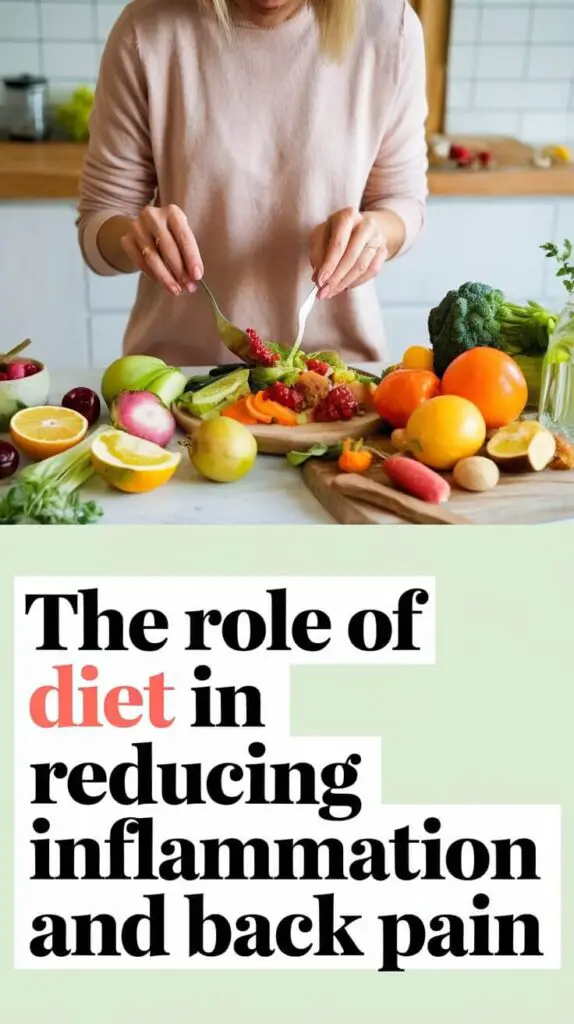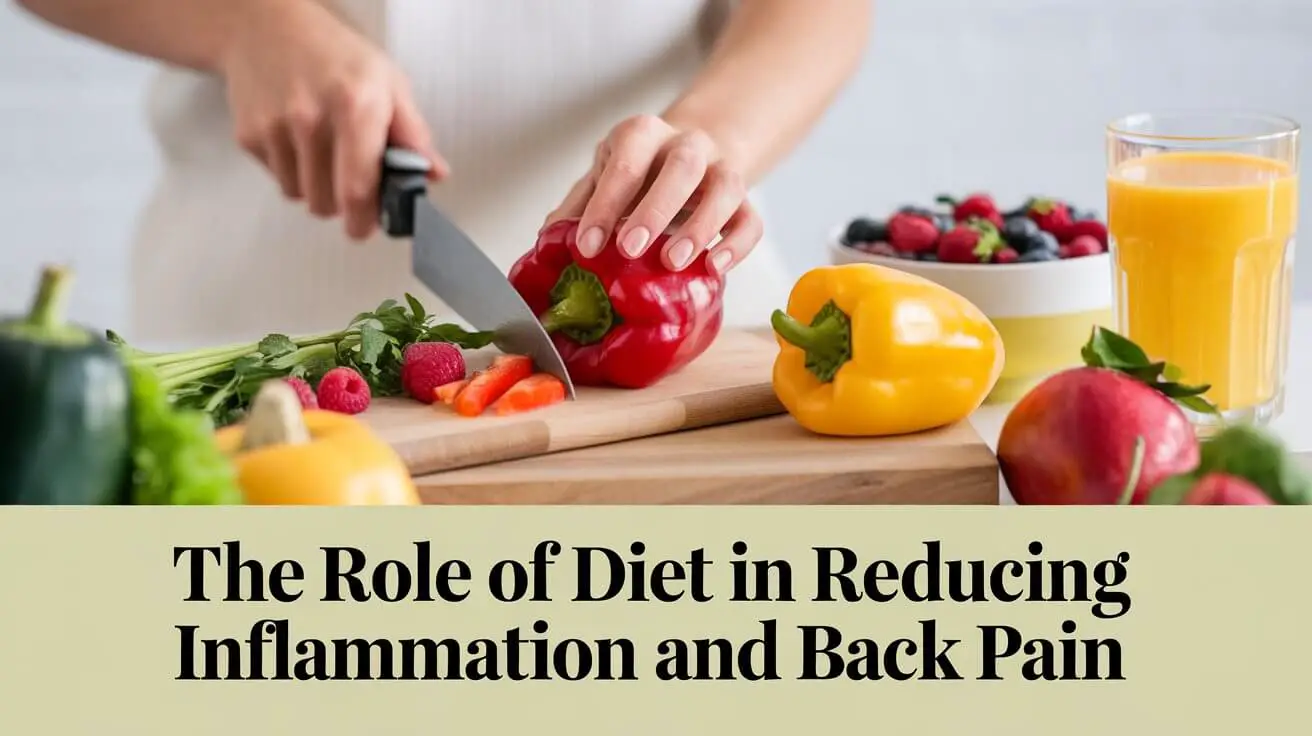If you are dealing with persistent back pain and looking for ways to manage it naturally, your diet might be a key factor to consider. I’ve personally experienced how certain foods can either help or hurt when it comes to inflammation and back pain. What we eat directly impacts how our bodies feel and function, and making the right dietary choices can play a significant role in reducing inflammation and relieving discomfort.

In this article, I’ll explain how inflammation contributes to back pain, share some anti-inflammatory foods, and offer practical tips to improve your diet for better back health.
Understanding the Link Between Diet, Inflammation, and Back Pain
Inflammation is the body’s natural response to injury or stress. While acute inflammation can help with healing, chronic inflammation often lingers and can contribute to conditions like arthritis, muscle pain, or even herniated discs. Back pain is frequently tied to this ongoing inflammation.
Your diet can either fuel or fight inflammation. Certain foods, like sugary snacks or fried meals, may increase inflammation, while others, such as fruits, vegetables, and healthy fats, can help reduce it.
My Experience: A few years ago, I realized my back pain often flared up after eating heavy, processed meals. When I started making healthier choices, like adding more fresh vegetables and cutting down on sugary drinks, I noticed a significant difference in how my body felt.
Anti-Inflammatory Foods to Include
Here are some foods known for their anti-inflammatory properties:
-
Fatty Fish
Fish like salmon, mackerel, and sardines are rich in omega-3 fatty acids, which are known to fight inflammation. Eating fish two to three times a week can provide the nutrients your body needs. -
Leafy Greens
Vegetables like spinach, kale, and broccoli are packed with antioxidants and vitamins that combat inflammation. Try incorporating them into your daily meals, whether in salads, smoothies, or stir-fries. -
Berries
Blueberries, strawberries, and raspberries are high in antioxidants like anthocyanins, which help reduce inflammation. They’re also a delicious and healthy snack. -
Nuts and Seeds
Almonds, walnuts, flaxseeds, and chia seeds are excellent sources of healthy fats and nutrients that support your body’s ability to manage inflammation. -
Turmeric
Turmeric contains curcumin, a compound with powerful anti-inflammatory effects. Adding turmeric to soups, curries, or even tea can be beneficial. -
Olive Oil
Extra virgin olive oil is a healthy fat that’s a staple of the Mediterranean diet, known for its anti-inflammatory benefits. Use it as a salad dressing or for cooking. -
Whole Grains
Brown rice, quinoa, and oats provide fiber and nutrients that help maintain a healthy gut, reducing inflammation.
Foods to Avoid
Just as some foods can reduce inflammation, others can make it worse. Limiting or avoiding these can help improve your back pain over time:
-
Sugary Foods and Drinks
High sugar intake can lead to chronic inflammation. Cutting down on candies, desserts, and sugary beverages can make a noticeable difference. -
Processed Meats
Items like sausages, bacon, and deli meats are high in preservatives and unhealthy fats that contribute to inflammation. -
Refined Carbs
White bread, pasta, and pastries can spike blood sugar levels and promote inflammation. Opt for whole grains instead. -
Fried and Fast Foods
Foods cooked in unhealthy oils are inflammatory. Limiting fried chicken, fries, and other fast foods is a step in the right direction. -
Excessive Alcohol
While moderate alcohol consumption may not be harmful, drinking too much can lead to inflammation and worsen back pain.
Practical Tips for an Anti-Inflammatory Diet
Transitioning to a healthier diet doesn’t have to be complicated. Here are some simple tips to get started:
1- Plan Your Meals: Preparing meals in advance can help you avoid unhealthy options when you’re in a rush.
2- Incorporate Variety: Eating a mix of colorful fruits and vegetables ensures you’re getting a range of nutrients.
3- Snack Smart: Replace chips or cookies with nuts, seeds, or fresh fruit.
4- Hydrate: Drink plenty of water throughout the day. Staying hydrated helps reduce inflammation and supports overall health.
5- Cook at Home: Home-cooked meals give you control over ingredients, allowing you to make healthier choices.
My Experience: When I started meal prepping and keeping healthy snacks on hand, I found it much easier to stick to an anti-inflammatory diet. Over time, this became a habit, and I began to notice fewer flare-ups in my back pain.
Beyond Diet: Other Lifestyle Changes
While diet plays a crucial role, combining it with other healthy habits can provide even better results:
1- Regular Exercise: Gentle activities like yoga or swimming can strengthen your back muscles and improve flexibility.
2- Maintain a Healthy Weight: Excess weight puts strain on your back, so managing your weight can help reduce pain.
3- Stress Management: Chronic stress can increase inflammation. Techniques like meditation or deep breathing exercises can help.
Conclusion
The role of diet in reducing inflammation and back pain is often underestimated, but making small, consistent changes to your eating habits can have a big impact. Incorporating anti-inflammatory foods and cutting back on processed, sugary items can help your body heal and feel better.
In my experience, paying attention to what I eat has been a game-changer in managing back pain. It’s not about perfection, but about finding a balance that works for you. Combine a healthy diet with other lifestyle changes, and you’ll be taking an important step toward better overall health and a pain-free back.
